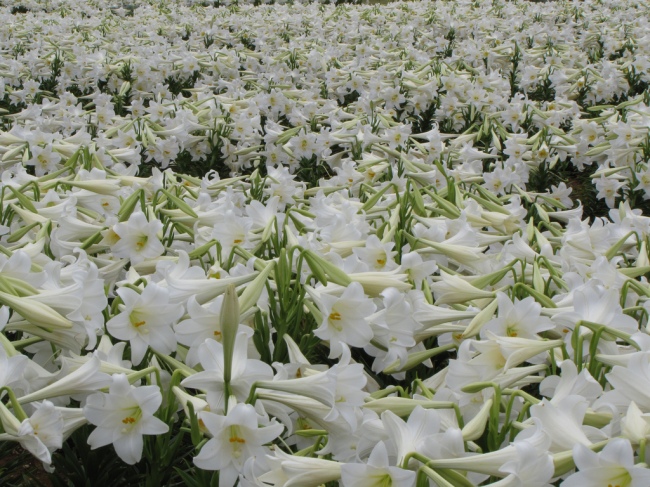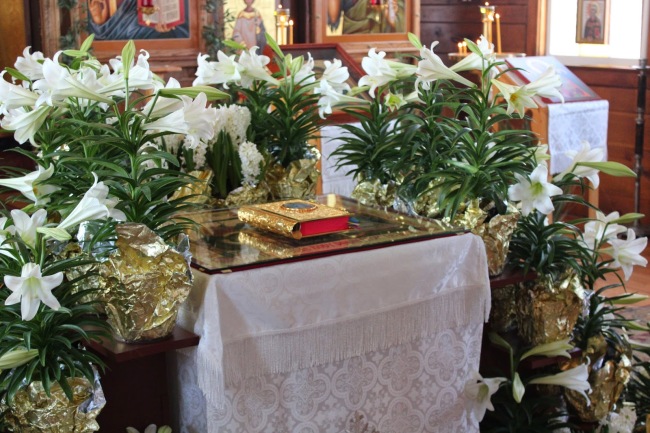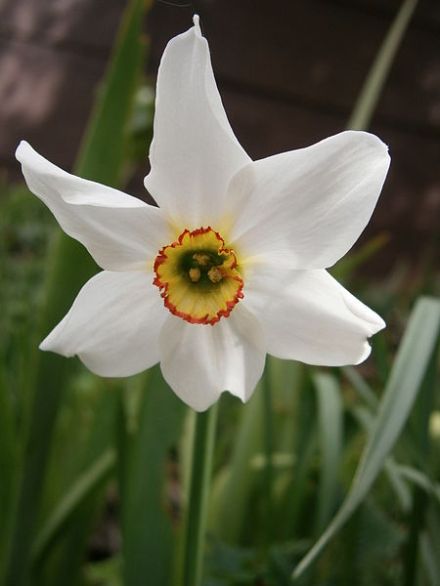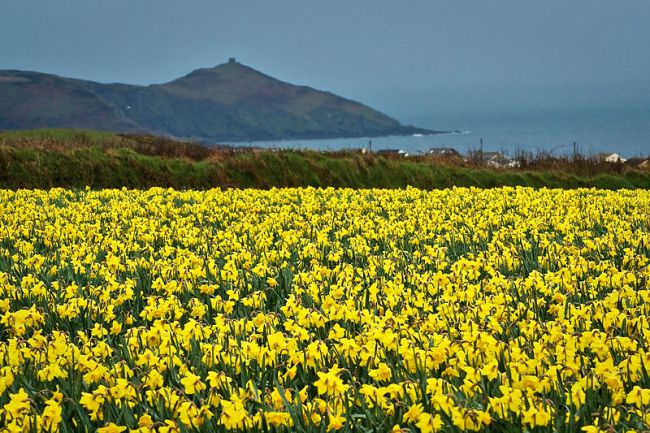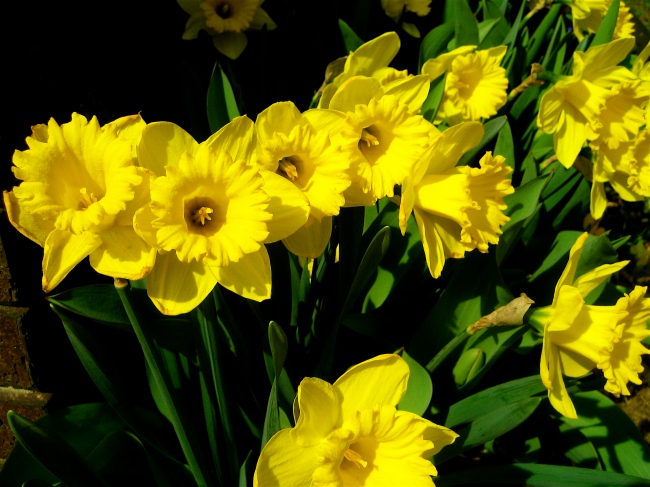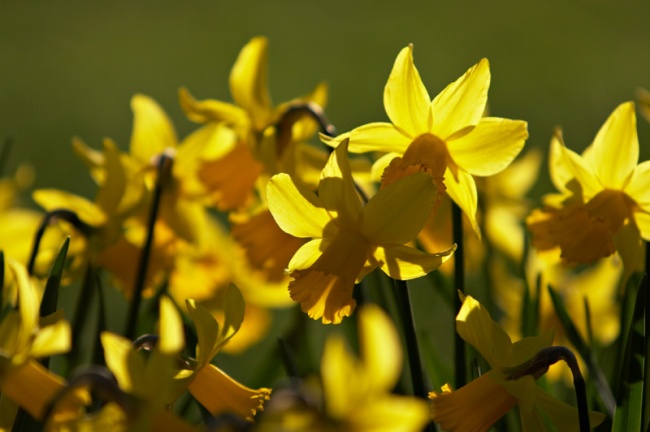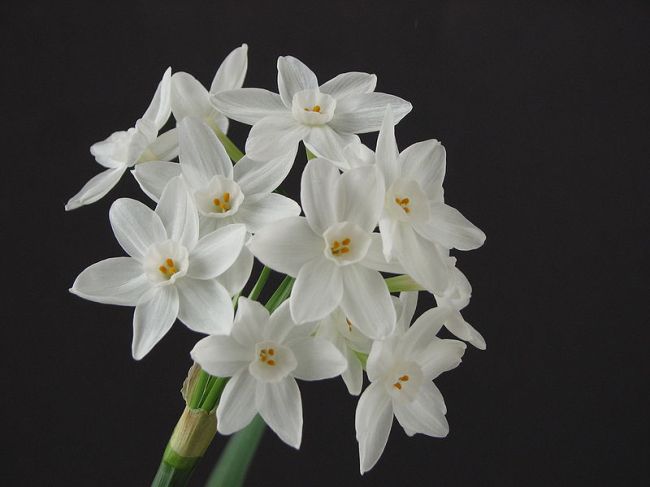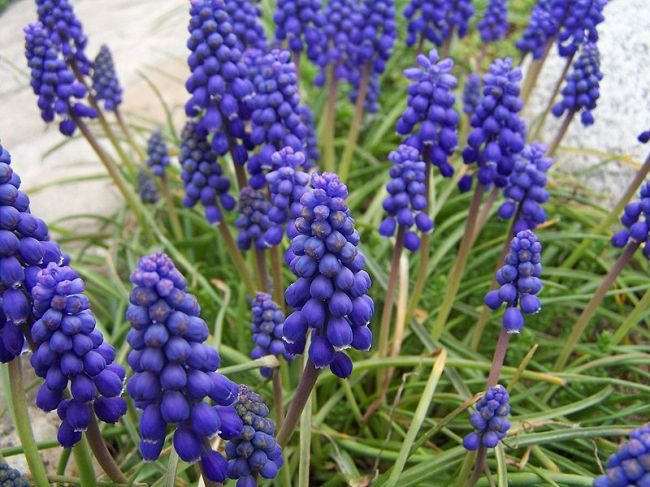
Muscari armeniacum. Opioła Jerzy. Wikimedia commons.
I’m starting to think spring is NEVER going to get here. There is no consistency to Kentucky weather this time of year as it is, but the fact that they’re calling for yet another cold arctic blast next week with snow is pretty freaking ridiculous. I mean, not that they don’t happen around here this time of year, but this is about the 20th of these we’ve had this year. I’m over it!!! Its kind of sad when Kentucky is going to be colder than Moscow during any period of the year, particularly in spring.
Anyways, spring in my yard is almost always rung in by these pretty little bloomers above. Thus spring hasn’t hit my yard yet since they are not up, but I’m going to talk about them anyways! They are a Hyacinth relative, not just in name, but in clade; and are easily confused with their relatives Leopoldia and Pseudomuscari (also fragrant early bloomers.) Many of the plants in the genus turn out to be weeds in my neck of the woods, but alas, they are a fragile, fragrant early beauty. They are also called Musk Hyacinths for their scent, which at least for M. armeniacum is not that musky to my nose (by the way, the name Muscari is Greek for Musk). I wouldn’t personally know if I’ve smelled any of the other species in the group, since they are so similar looking, but the fragrance of Grape Hyacinth is neither grape nor Hyacinth. Its delightfully sweet with a tinge of musk, very similar to their cousins the Bluebells, but with a richer, muskier perfume. Hmmm… maybe we should just add this one to the list of plants needing to be sampled by oneself to really get the picture? Certain species are reported to have different scents, ranging from honey-like to banana.
Related to Grape Hyacinth is Puschkinia, another Scilla (Hyacinthoid) with a fragrance that is sweet and spicy. They are a rare find in American gardens and I personally have yet to sample one. They look strikingly like Hyacinths, except are a light blue or striped white and blue, and have a small cup in the middle around the reproductive parts like Narcissus. Sadly, its not named after the Russian poet Pushkin, but the Russian botanist Pushkin.
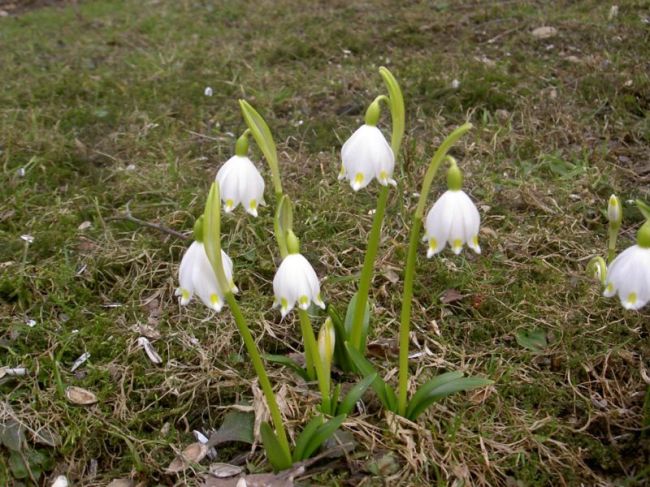
Leucojum vernum. IKAI. Wikimedia commons.
Similar to snowdrops are spring snowflake, Leucojum. They are lily relatives, and like snowdrops, bloom early in the spring almost unexpectedly. They come a week or two later, and have a more marked scent that is reminiscent of the large Daffodils one sees in early April. Its not quite sweet, but musky and earthy, almost like air-dried linen with a with a slight tang to it. This is one plant you have to really bury your nose in to smell it though. I saw them at Hillwood Gardens in DC blooming in February (covered in snow no less) and assume some are out there blooming here as well. They don’t tend to last long here since spring is fairly non-existant most years and is squished between winter and summer. Perhaps they might last a bit this year with the amazing slow start to spring we’re having.
It is reported that Persian Irises bloom this early where the climate supports it. Around here, Iris reticulata is the only early-blooming Iris that can withstand our cold, wet winters. Wilder details it in The Fragrant Path as ‘possessing a perfume much like that of violets.’ Sounds like many Irises to me, although the later-blooming bearded ones are a mix of violet and privet, or some other cloying fragrance to be sampled lightly. Perhaps the early bloom stifles some of the over-the-top sweetness.

Iris reticulata. John Lonsdale. http://www.pacificbulbsociety.org.
Lastly, Winter Hellebores are another early bloomer that, although not a bulb, are as reliably blooming as the bulbs above. I’ve already seen a few of the hybrids poking their heads out, and they are rather nice in a garden as another spring initiate. They tend to be favored in woodlands and well-maintained historical gardens in this region. The hybrids have a scent similar to Snowflakes and Crocus, but lighter than either. The species Helleborus odorus is the olfactory winner of the clan, but is rarely planted in gardens, and eschewed for its colorful brothers H. x hybridus instead. H. orientalis is known as the Lenten Rose, not only for its bloom period, often being during the Lenten season, but its faint purple and mauve colors, fitting the ecclesiastical nature of the season of repentance as well. Why purple is the color of repentance is something beyond my personal knowledge.

Various Hellebore hybrids. Simon Garbutt. Wikimedia commons.
Well this concludes the bulbs for now- I shall likely revisit them whence April arrives, and the season for flowers has finally dawned. Until then, I will do some local fragrant weeds and wildflowers. I hope wherever you are reading this from, its more springy than here!



